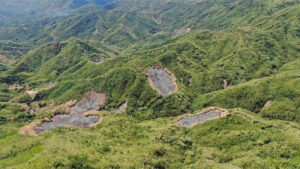THE Department of Environment and Natural Resources (DENR) said it proposed to plant 3 million trees along the Upper Marikina River Basin Protected Landscape (UMRBPL) over the next three years.
This is expected to increase the protected landscape’s forest cover to 43% from 24.99%, the DENR said in a statement.
The protected area covers 26,125.64 hectares in the city of Antipolo and in the municipalities of Baras, Rodriquez, San Mateo and Tanay, all in Rizal province.
The UMRBPL was proclaimed a protected area through Proclamation No. 296 dated Sept. 26, 2011, two years after Super Typhoon Ondoy inundated Rizal Province, Marikina City, and Metro Manila.
The proclamation calls for the protection of its watersheds and sustainable management of its natural resources.
Included in the list of threatened and endangered wildlife species found in the Marikina watershed are forest trees like narra, red and white lauan, bagtikan, kamagong, and molave while the wild fauna includes birds like the Philippine bulbul, black-naped oriole and jungle fowl; mammals like the Philippine deer, wild pig and Philippine monkey; and monitor lizards and forest frogs.
The DENR cited an increase in closed forest cover in Upper Marikina, which it said “signifies that previously degraded or barren areas are now thriving with healthy trees.”
“As the closed forest cover expands, a corresponding decrease in open forests was noted, indicative of a healthy ecological progression,” it said.
Open forest areas within Upper Marikina have decreased by 20.95% or 1,138.28 hectares, “signifying a transition towards more mature, closed forest ecosystems.”
Some 628.47 hectares (1.77%) of shrubland in the area have developed into open forests.
The target of three million trees for UMRBPL by 2028 sets a precedent for sustainable development and conservation efforts in the region, it said.
The DENR largely attributed the improvements in UMRBPL’s forest cover to a 2011 greening program that coincided with UMRBPL’s proclamation as a protected area.
“This was further supported by Executive Order No. 23 in 2011, which established a moratorium on timber cutting and harvesting in natural and residual forests,” it noted. — Kyle Aristophere T. Atienza

